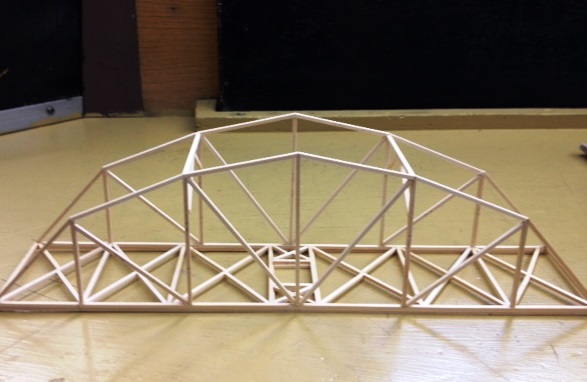Courses by Software
Courses by Semester
Courses by Domain
Tool-focused Courses
Machine learning
POPULAR COURSES
Success Stories
Project 1
Aim :- Design a battery pack for the car with 150Kw capacity. Objective :- Design the battery pack configuration. Draw the BMS topology for this battery pack. Theory :- Battery Management System, A Battery Management System AKA BMS…
Suraj Gawali
updated on 19 Sep 2022
Aim :- Design a battery pack for the car with 150Kw capacity.
Objective :- Design the battery pack configuration.
Draw the BMS topology for this battery pack.
Theory :-
Battery Management System,
A Battery Management System AKA BMS monitors and regulates internal operational parameters, i.e. temperature, voltage and current during charging and discharging of the battery. In technical terms, the BMS estimates the SoC (state of charge) and SoH (State of Health) of the battery to improve safety and performance.
It avoids over-charging and over-discharging of the battery pack. This way, it maintains charge level within maximum and minimum allowed capacity to prevent sudden accidents [explosion]. Hence a BMS is a highly crucial device to ensure the safety of the battery and user. There are many other benefits of using BMS; we will discuss them later in this article.
A BMS is an electronic board consisting of a variety of components and circuitry. After detecting a problem in operational parameters (voltage, temperature etc.) BMS triggers input to the alarm system followed by disconnecting the battery pack from the load or charger.
Different BMS Topology:
The components of a battery management system can be arranged in several different ways. These arrangements, called topologies, can be centralized, distributed, and modular.
Centralized BMS Topology:
In a centralized topology, there is a single BMS printed circuit board (PCB) with a control unit that manages all cells in a battery through multiple communication channels. This type of arrangement makes a BMS a bulky, inflexible yet cost-effective solutions.
Distributed BMS Topology:
Here, every battery cell has its own BMS PCB, and a control unit is connected to the entire battery through a single channel. The daisy chain is one of the distributed topology variations intended for systems that have a small need for fault tolerance. Distributed BMSs are easy to deploy but costly because of the abundance of electronics.
Modular BMS Topology:
A modular BMS is a combination of the above two topologies. This arrangement is also known as decentralized, star, or the master and slaves topology. There are several interconnected control units (slaves), and each of them oversees a group of cells in a battery. The slaves are connected to the main control unit or master, which handles the integrity and safety of the whole battery. A modular BMS topology can provide a balance between the price and design complexity.
1). Ans:
Battery Pack Configuration


So here we Designed the battery pack configuration by calculating the no of cells in series and no cells in parallel and we also done the rounding off the no of cells in series and parallel
2). Ans:
BMS topology for this battery pack,

- Here we mainly used the Master Salve topology because This architecture comprises of the Master and Slave BMS units.
- so by this The slave unit monitors balances and controls a group of battery cells within the battery module.
- It communicates with the master unit through a communication interface.
- Importance of BMS Architecture for EV Battery Systems
- Measurement Precision
- Connection Reliability
- Expansion Versatility
Leave a comment
Thanks for choosing to leave a comment. Please keep in mind that all the comments are moderated as per our comment policy, and your email will not be published for privacy reasons. Please leave a personal & meaningful conversation.
Other comments...
Be the first to add a comment
Read more Projects by Suraj Gawali (25)
Project 2
Aim :- To find maximum heat generation in the battery pack mathematically and using MATLAB/Simulink. Objective :- The max heat generation of the battery The SOC of the battery at 2 *104second of the battery operation Theory :- SOC Calculation Technique In EV Battery Pack: The State of Charge (SoC) of a battery…
20 Sep 2022 01:46 PM IST
Project 1
Aim :- Design a battery pack for the car with 150Kw capacity. Objective :- Design the battery pack configuration. Draw the BMS topology for this battery pack. Theory :- Battery Management System, A Battery Management System AKA BMS…
19 Sep 2022 01:21 AM IST
Week 11 - Simulation of Flow through a pipe in OpenFoam
Aim :- Simulation of Flow through a pipe in OpenFoam. Objective :- Simulate an axi-symmetric flow by applying the wedge boundary condition. Validate results with the Hagen- Poiseuille's equations for the fully developed flow. Also write code in Matlab to automate the generation of blockMeshDict file. …
24 Aug 2022 06:45 AM IST
Week 9 - FVM Literature Review
Aim :- Introduction to Finite Volume Method. Objective :- Explain what is FVM. State major differences between FDM & FVM. Describe the need for interpolation schemes and flux limiters in FVM. Theory :- Finite Volume Method, The finite volume method (FVM) is a method for representing…
19 Aug 2022 07:34 AM IST
Related Courses






0 Hours of Content

Skill-Lync offers industry relevant advanced engineering courses for engineering students by partnering with industry experts.
Our Company
4th Floor, BLOCK-B, Velachery - Tambaram Main Rd, Ram Nagar South, Madipakkam, Chennai, Tamil Nadu 600042.
Top Individual Courses
Top PG Programs
Skill-Lync Plus
Trending Blogs
© 2025 Skill-Lync Inc. All Rights Reserved.








